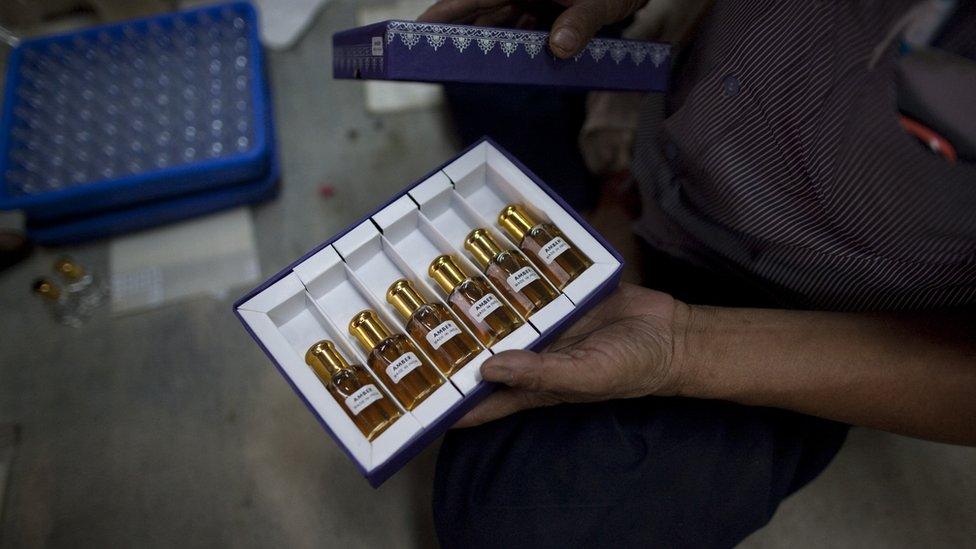What life is like in Delhi's 168-year-old mansion
- Published

Anil Pershad says he is a proud resident of old Delhi and will never leave the area
Old Delhi draws thousands of tourists every year because of its old-world charm, street food and heritage buildings. Anasuya Basu visits one such building to explain what makes it special and how the owners are trying to save it from crumbling. Pictures by Mansi Thapliyal.
The walled city or Shahjahanabad, as old Delhi was earlier known, was built by the Mughal emperor, Shah Jahan. Few yards away from its historic 17th Century Mughal mosque and within a stone's throw of an old cloth market stands the famous Lala Chunnamal's haveli (mansion).
Many such palaces and mansions were built in this city, which was the power centre of the Mughal rule in India, but only a handful of them have survived.
The Delhi government's planned work to restore 554 crumbling mansions in the area is yet to begin. But the owners of Lala Chunnamal's haveli take pride in keeping it in a reasonably good condition without any government support.
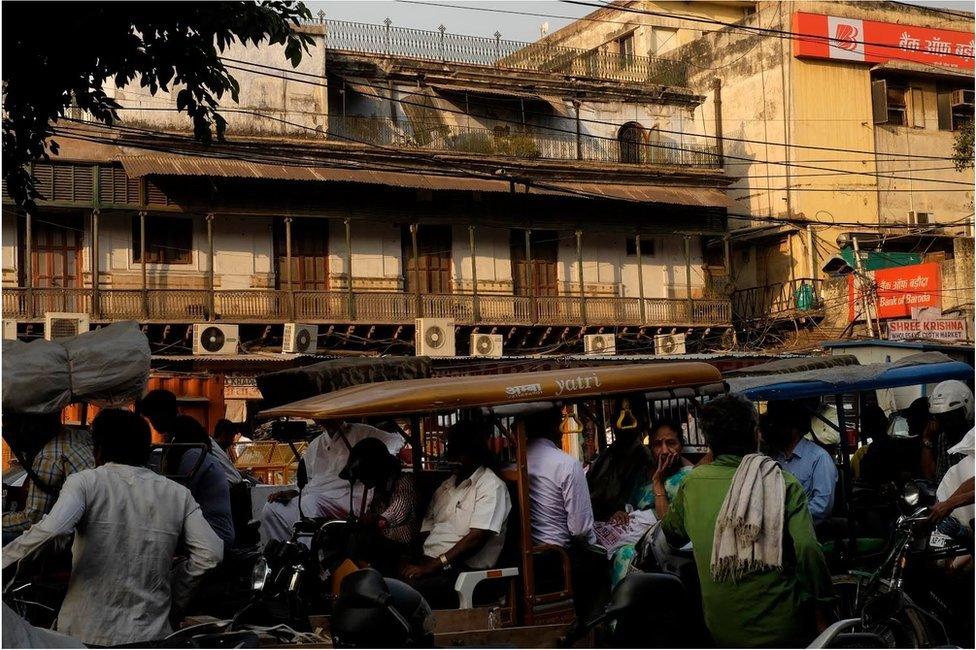
The mansion is located in a congested neighbourhood in old Delhi
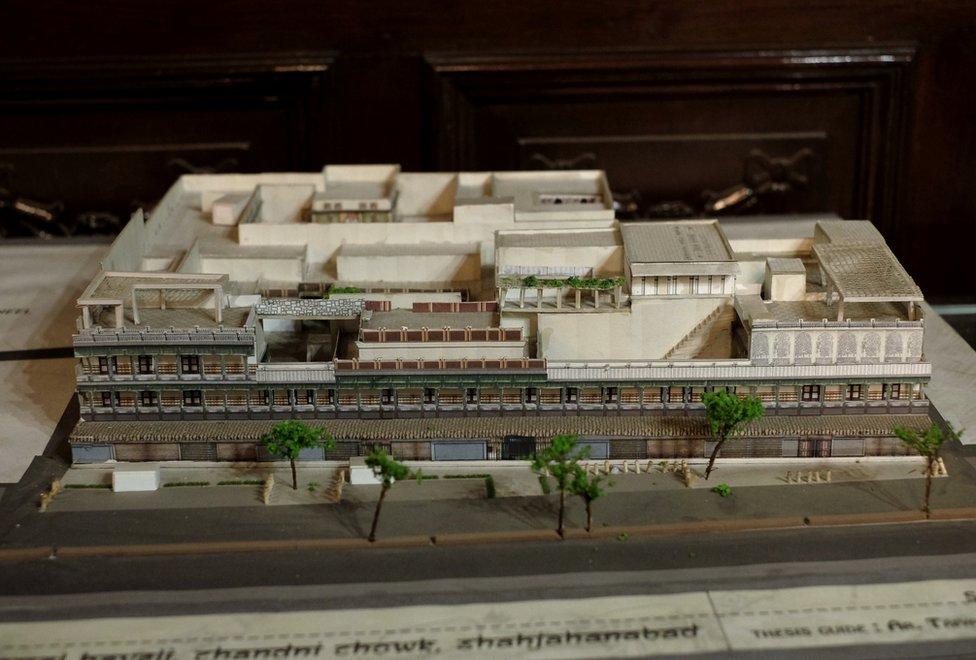
The mini replica shows the grandeur of the mansion
It was built in 1848, nearly a decade before the sepoy mutiny of 1857, external.
Anil Pershad, one of the current owners of the mansion, explains why his haveli is considered grand.
"It covers an area of one acre, there are 128 rooms which could house 30 family members, excluding the servants. But now most of the family members have locked up their share of the mansion and shifted to other localities in the city," he says.
Beautiful interior
The once grand facade of the building is now crowded and lined with many shops selling clothes, hardware and spices. But once you step inside the haveli, it's a different world.
Two flights of a narrow stairwell open in front of a heavily decorated mirror hung on top of the doorway, which leads to a beautiful courtyard that looks like a structure straight out of a period film.
The drawing room is spread over an area of 700 sqft (65 sqm) and its walls are 18ft high. The room has three wooden chimneys and the ceilings are decorated with handmade chandeliers.
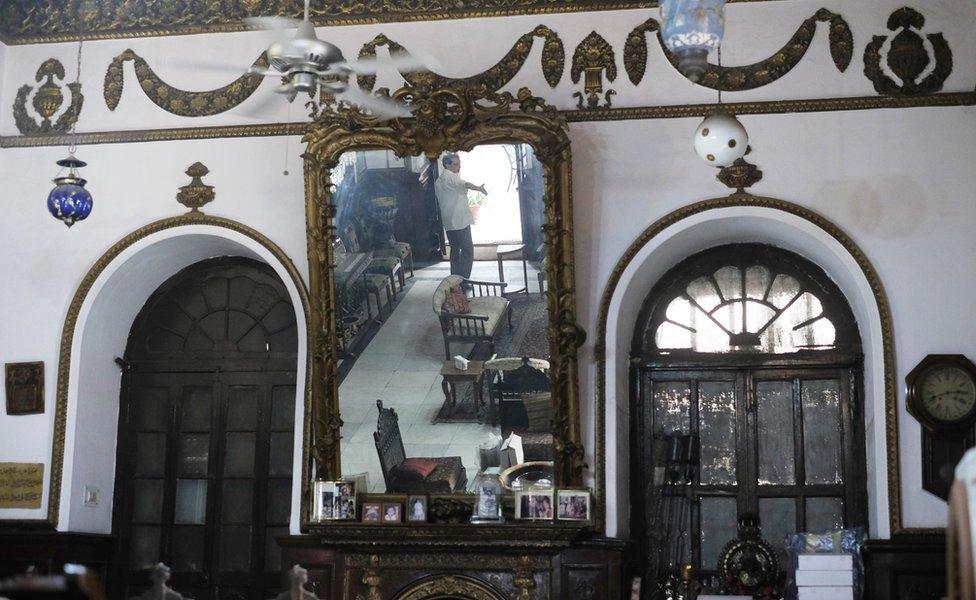
The mirrors on the walls are heavily decorated

The staircase also has mirrors on its walls
Huge Belgian mirrors positioned at an angle on the sturdy walls catch the reflection of the breathtakingly beautiful chandeliers, ancient fans suspended from the high ceiling and finely-crafted glass lamps from Europe.
Mr Pershad says that his family is the 10th generation of Lala Chunnamal's descendants.
Chunnamal was a wealthy man. He used to lend money to the last Mughal emperor, Bahadur Shah Zafar II and was also a supplier of shawls, silks and brocades to the royal household, Mr Pershad says.
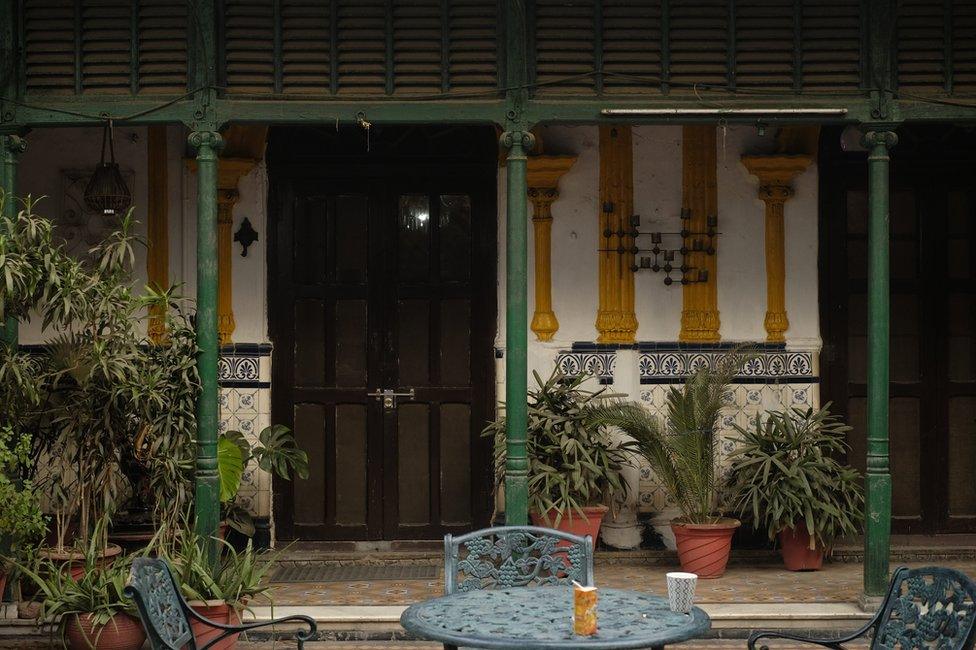
The courtyard has a mini garden
He even had great trading relations with India's British rulers.
"We actually owned half of old Delhi but now this [mansion] is the only ancestral property that remains with us," says Mr Pershad.
He adds that the haveli's old-world charm has attracted many famous people in the past.
"India's first prime minister Jawaharlal Nehru and his daughter Indira Gandhi used to visit the haveli for dinners," he says
"Actress Kate Winslet has also visited the haveli. Even today, Bollywood actors and director often come to see the place as a possible shoot location."
'No plans to leave'
The mansion has been listed as a heritage property by the Indian National Trust for Art and Cultural Heritage, an organisation that works towards conservation of unprotected architectural heritage and sites in India.
But Mr Pershad says nobody has come forward to help him with the upkeep or preservation of the building.
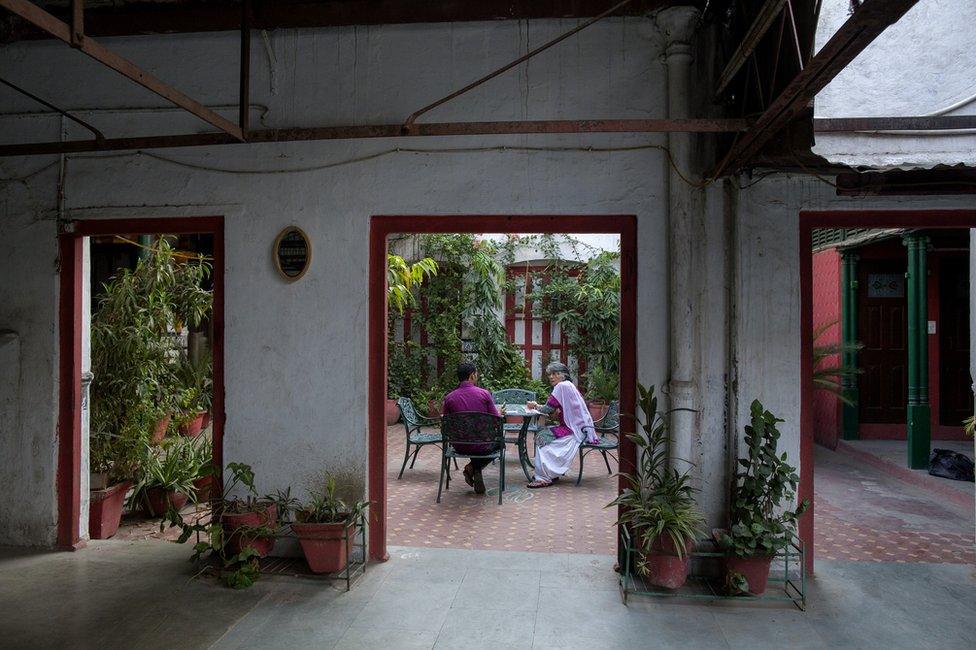
The peaceful mansion presents a stark contrast to old Delhi which is busy and overcrowded
"I do what I can to take care of the mansion and the rooms which are in use with my own money," he says.
Maintaining this building is tough, but he has no plans of leaving the area.
"I can't imagine living in any other part of Delhi where living quarters are so cramped. I wake up in this house where my forefathers have lived and have witnessed so many important twists and turns of history," he adds.
"Even my grandchildren refuse to move out of this old mansion."
- Published12 December 2011
- Published1 November 2015
